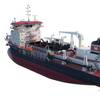Singapore Improves Maritime Safety
The number of major incidents in the Port of Singapore has dropped over the last 10 years, with fewer than 0.12 major incidents per 100,000 vessel movements in 2018, down from 0.8 in 2009.
Dr Lam Pin Min, Senior Minister of State for Transport and Health, said, “I thank the maritime community for the good work in improving maritime safety. The use of technology and digitization can further enhance maritime safety by providing seafarers better access to critical safety-related information and early warning of potential incidents.”
Maritime and Port Authority of Singapore (MPA) will embark on a “Digital OCEANS” strategy to encourage Open or Common Exchange And Network Standardization. This strategy aims to allow digital platforms of port authorities e.g. maritime single windows of shipping lines and of logistics service providers to link up. This will allow business entities, government agencies, and vessels to connect seamlessly between different digital platforms and achieve end-to-end connectivity.
For example, MPA is developing a Maritime Single Window (MSW) to provide a single portal access to submit documents for port clearance. The MSW will have the ability to exchange relevant data through standard Application Programming Interfaces (APIs).
MPA is also supporting the International Association of Marine Aids to Navigation and Lighthouse Authorities (IALA) in operationalizing the International Maritime Organization’s (IMO) concept of e-navigation for vessels which aims to make marine navigation safer and digitalize key maritime services. These initiatives will improve efficiency, reduce transaction costs and enhance maritime safety.
At the fourth International Safety@Sea Conference Dr Lam witnessed the signing of three memoranda of understanding (MOUs) following the launch of the Center of Excellence in Maritime Safety (CEMS) last year.
Set up by the Singapore Maritime Institute and Singapore Polytechnic, CEMS focuses on research and innovations that enhance navigational safety. It also contributes to the training and development of future-ready seafarers, through the use of emerging digital technologies such as augmented reality and virtual reality.










